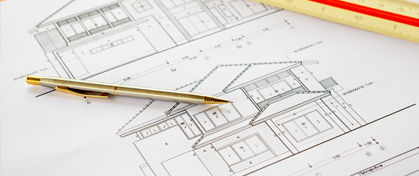With the price of fossil fuels – gas in particular – rocketing, energy bills for millions of people are set to increase.
That’s not great news at any time of the year, but it hurts a lot more in the winter when temperatures drop and our heating goes on.
There are, however, plenty of ways you can reduce your energy bills. There are obvious changes you can make to the way you live, like turning lights off when you’re not in the room and putting on a jumper instead of the heating, but there are some less obvious methods too. In this article, we’ll take a look at some common, clever and unusual energy-saving tips to help reduce your energy costs.
Check your warm home discount eligibility
If you’re looking for help with your energy bills this winter, see if you’re eligible for the Warm Home Discount Scheme (WHDS). WHDS offers a one-off payment of £140 towards the energy bills of those that need it the most – and the payment can be credited to your energy account or prepayment card.
Those eligible for the WHDS include Pension Credit customers who receive the Guaranteed Credit element of Pension Credit and those on a low income who meet their energy supplier’s criteria for WHDS eligibility. Your energy supplier needs to be one of those registered on the scheme, too.
Take a navy shower
When sailors needed to conserve fresh water on their vessels while out at sea, they invented a special way of showering – the ‘navy shower’. Taking a navy shower means limiting yourself to just three minutes of hot water! You can get down to three minutes by doing all your soap and shampoo lathering with the shower switched off, then put it back on again to rinse. Reducing your shower time from 10 minutes to three can save you up to £80 a year, so it’s certainly worth a try.
If you’re a household that enjoys a lot of hot soaks in the bath, you can also switch the bath for a three-minute shower and save even more on your energy bill.
Draught-proof your home
Over time, your home will naturally start to leak heat through draughts around your doors, windows and floor – or even the chimney if you have an older home. By draught-proofing your home you can help bring your energy bills down. Here are some of the most common draught-proof techniques:
- Apply self-adhesive foam strips to your windows
- Buy a cover for your keyholes
- Fill in skirting board cracks
- Insulate loft hatches
- Put a sponge in your letterbox! (this is a great way to keep the hot air in and the cold air out, but make sure there’s somewhere else to leave your post and let your postie know)
These methods do mean a small outlay at the start, maybe up to £200 if you do it properly. But it can save you £30 a year on your energy bills, so your draught-proofing will have paid for itself after a few years
Lighten your laundry load
Washing machines use a lot of water and energy to wash and spin all your dirty clothes. While we’re not going to suggest living in dirty clothes, it can be a great idea to cut down how often you put the washing machine on, and doing a full load when you do.
When you do wash your clothes, consider washing them at between 30-40 degrees to reduce the amount of energy your machines need to spend on heating the water. Try hanging up your laundry to air-dry it, too – this requires zero energy while using a tumble dryer can significantly hike up your energy costs.
Switch off standby
This might be a well-known tip, but it’s often one we forget to do, so it’s certainly worth highlighting again. Whether you’re leaving your home or going to bed, it’s easy to just turn off the TV, games console or computer monitor and think we’ve completely powered off, but that’s not always the case. When we turn off our electrical devices, many stay in standby mode, which uses a small amount of energy the entire time it’s left on standby. When you shut your electrics down completely, you can save up to £40 a year on your energy bills. Another great tip is to unplug anything you’re not using – if it’s not plugged in, it can’t contribute to your energy bills
Have a lightbulb moment
If you’re using traditional or halogen lightbulbs to light your home, you can save on your energy bills by making a simple switch to LED and energy-saving bulbs. You don’t need to be a qualified electrician to change a lightbulb, and when you do, you won’t lose any light either – there are plenty of bright LED options available. You can make further savings by switching your lights off when you’re not in the room, too.
Ready to save even more? Find out how much switching to a smart home could save you!
Helen is a personal finance editor who’s spent 11 years (and counting!) in the finance industry. She creates content on everything money with the goal of getting people thinking – and talking – about their finances in ways they may not have done before.
![Email icon]()
Become a money maestro!
Sign up for tips on how to improve your credit score, offers and deals to help you save money, exclusive competitions and exciting products!
Find this useful? Share it with others!









